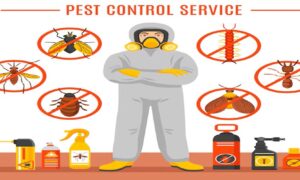Do you need help attracting more visitors to your pest control website? Is your website not showing up on search engine results pages? Don’t worry; we have some tips to help you improve your website’s SEO and increase online visibility.
1. Keyword Research
The first step in improving your website’s SEO is to conduct thorough keyword research. Identify the keywords and phrases potential customers use when searching for pest control services in your area. Use keyword research tools like Google Keyword Planner or SEMrush to find high-value keywords with low competition.
2. On-Page Optimization
Optimize your website’s on-page elements once you have identified your target keywords. Include your target keyword in the page titles, meta descriptions, headings, and content.
However, write naturally and avoid keyword stuffing, as search engines penalize this practice. Use descriptive URLs and optimize your image alt tags with relevant keywords.
3. Create High-Quality Content
Search engines value high-quality, informative, and relevant content. Create blog posts, articles, or resource pages that provide valuable information about pest control. Address common pest problems, prevention tips, and offer advice to your audience. Use your target keywords in the content while ensuring that it reads naturally. Regularly update your website with fresh content to keep visitors engaged and search engines returning for more.
4. Local SEO
Pest control is a local service, so optimizing your website for local searches is crucial. Claim your Google My Business listing and ensure your contact information, address, and phone number are accurate. Encourage your customers to leave reviews on your Google My Business page. Optimize your website for local keywords by including your city or region in your content and meta tags.
5. Mobile Optimization
More and more people are accessing the internet through their mobile devices. Ensure that your website is mobile-friendly and optimized for a seamless user experience. Responsive design and fast loading times are essential for mobile optimization. Use Google’s Mobile-Friendly Test to check if your website meets the criteria for mobile optimization.
6. Link Building
Building high-quality backlinks is an essential aspect of improving your website’s SEO. Reach out to other relevant websites, such as local directories or industry associations, and request them to link back to your website. Create valuable content that others would want to reference and share. Guest blogging on industry-related websites can also help you gain valuable backlinks.
7. Monitor and Analyze
Finally, monitor and analyze your website’s performance using tools like Google Analytics. Monitor your organic search traffic, keyword rankings, and user engagement metrics. This data will help you understand what’s working and what needs improvement. Make adjustments to your SEO strategy based on these insights.
These tips can improve your pest control website’s SEO and increase organic traffic. Remember that SEO is an ongoing process that takes time to see results.
At our Pest Control SEO agency, we are dedicated to helping businesses boost their online presence and increase their visibility in search engine results. Our team of experienced SEO professionals is passionate about driving organic traffic to our client’s websites and helping them achieve their marketing goals.



































